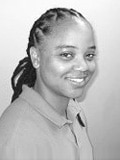
Sports Pro Physical Therapy, LLC
12200 Annapolis Road
119
Glenn Dale, MD 20769

More Heart Disease, Stroke and Diabetes Articles
Postural Education
Posture refers to the overall alignment of the various body parts to each other when a person is standing or sitting in a relaxed position. Posture is the result of many underlying processes and tensional relationships throughout the body. The ideal posture is assumed to be when the earlobe, tip of the shoulder, hip joint and outside bump (malleolus) of the ankle all line up on a plumb line. The center of the knee should be slightly in front of that line. This arrangement is viewed as indicating that a persons overall structure is in good mechanical balance. Results of poor posture may include forward head, rounded shoulders, excessive lordosis, tight and weak back muscles, and tight and weak leg muscles. Prolonged positioning in “poor” posture can lead to mechanical problems, dysfunction and pain from structures that are involuntarily stressed.
Causes of poor posture
Injury and muscle guarding
Disease and nutritional state
Habit; lack of awareness of incorrect posture and lack of knowledge of correct posture
Muscle tension and muscle weakness
Muscle Imbalance
Mental attitude and stress
Heredity
Improper shoes
Signs and Symptoms
Tension headaches
Problems with vision can possibly be associated with poor posture
Pelvic pain
Chronic pain can be a result of incorrect posture
Benefits of Physical Therapy
Decrease Pain
Strength and flexibility training
Improve postural alignment
Help regain movement and range of motion
Improve and correct posture
Provide relaxation and stress relieving techniques
Improve balance and coordination
Postural education and safety awareness
Improve body mechanics
Re-education in movement patterns and positions during activities
Other Articles You May Find of Interest...
- Gaining Personal Confidence and Function after Stroke Rehabilitation
- Understanding Gender Differences: Heart Attacks In Women
- Diabetic Foot Care For Summer
- Take care of heart health after 40s
- Causes and Treatments For Hypertension and Heart Attacks
- Heart Health at Your Fingertips: The Revolution of Remote Cardiac Monitoring
- Your Heart’s Best Support This Year! The 9 Pillars To Prevent Heart Disease

















